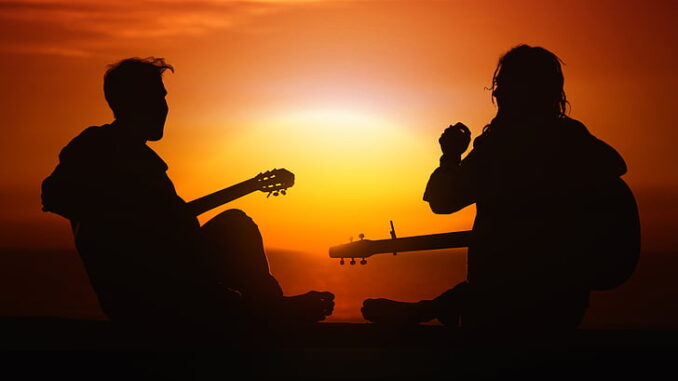
The Band are frequently cited as the creators of americana. That is not purely down to those sepia tinged photos depicting them as frontiersmen from the century before last. To appreciate that accolade set this quintet in the musical context of 1968 when they released their debut album ‘Music From Big Pink’. Rock and roll was fast becoming protest music set to psychedelia. It was loud and egos strutted the boards and bossed the studios. Enter an idiosyncratic ensemble of four Canadians and one American who had emerged from a basement in upstate New York, far from all the action on the other side of the continent. In stark contrast to the cacophonous rejection of prior generations these musicians were mixing a gentler blend of country, rock, classical, folk, blues, R&B and soul with sparkling purity, lyrics of deep honesty drawing deep from the well of traditional American music. There was no leader, this was a genuine co-operative. If writing was concentrated into few hands, performing was a group activity. Each member played several instruments, vocals were shared as harmonies abounded.
This easy going innovation soon peaked before rifts opened up. Guitarist and principal writer Robbie Robertson was thought by the others to be overstepping his claims to recording rights and writing credits. In return he despaired at the way Levon Helm, Richard Manuel and Rick Danko’s love of experimentation had overflowed into drug and alcohol problems. After their legendary ‘Last Waltz’ farewell show The Band officially disbanded in 1977. Without Robertson they re-united in 1983. Numerous line-up changes later The Band finally called it a day in 1999. The price had been high; Manuel committed suicide aged 42 in 1986, Danko died in 2000 after years battling drugs and booze and throat cancer finally claimed Helm in 2012.
Yet in those three decades The Band released only ten studio albums and their genius was heavily skewed to the early years. Fortunately for this exercise ‘+ related’ permits a variety of solo albums as well as The Band’s collaborations with Bob Dylan. Vocally diverse, Robertson’s intricate guitar, Hudson’s classical organ forays complementing Manuel’s keys all powered by Helm’s syncopated, slightly behind the beat, drumming style alongside Danko’s dependable bass lines begat americana.
Several of these albums have been re-released and remixed with additional material so for the purpose of this list each has been selected on the strength of the original.
Number 10: Robbie Robertson ‘Robbie Robertson’ (1987)
 Although Hudson and Manuel make guest appearances, Robertson’s eponymous solo debut is far from The Band’s traditional sources. Others, e.g. U2 and Peter Gabriel, take his exceptional playing off in a new direction. Late 1980’s rock is an unlikely addition to The Band’s essentials but production by Daniel Lanois smooths the record’s more bombastic edges. ‘Somewhere Down the Crazy River’ may jog a few memories but there’s much better. Robertson is already focussing his ghostly cinematic sound in ‘Sonny Got Caught In the Moonlight’. He puts those ethereal sound waves to effective use in ‘Fallen Angel’, his tribute to Manuel, “All the tears, all the rage”.
Although Hudson and Manuel make guest appearances, Robertson’s eponymous solo debut is far from The Band’s traditional sources. Others, e.g. U2 and Peter Gabriel, take his exceptional playing off in a new direction. Late 1980’s rock is an unlikely addition to The Band’s essentials but production by Daniel Lanois smooths the record’s more bombastic edges. ‘Somewhere Down the Crazy River’ may jog a few memories but there’s much better. Robertson is already focussing his ghostly cinematic sound in ‘Sonny Got Caught In the Moonlight’. He puts those ethereal sound waves to effective use in ‘Fallen Angel’, his tribute to Manuel, “All the tears, all the rage”.
Number 9: The Band ‘Moondog Matinee’ (1973)
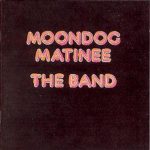 ‘Moondog Matinee’ was intended to have been a setlist from their early days as The Hawks backing Ronnie Hawkins on the Toronto club circuit but in the end only ‘Share Your Love With Me’ made it onto the record. Helm summed up ‘Moondog Matinee’ as “all we could do at the time”. That does not do it justice. Helm was steeped in R&B and the blues that he and the others cover both faithfully and with immense feeling. ‘Ain’t Got No Home’ barrels along with The Band’s funky horns. ‘Mystery Train’ speeds along the tracks before branching out into a jam that eventually winds to a halt. The pace returns in ‘Promised Land’, proof that the relentless nights on the boards with Hawkins were not in vain. Manuel’s rich vocals on ‘The Great Pretender’ carry The Band into the Great American Songbook.
‘Moondog Matinee’ was intended to have been a setlist from their early days as The Hawks backing Ronnie Hawkins on the Toronto club circuit but in the end only ‘Share Your Love With Me’ made it onto the record. Helm summed up ‘Moondog Matinee’ as “all we could do at the time”. That does not do it justice. Helm was steeped in R&B and the blues that he and the others cover both faithfully and with immense feeling. ‘Ain’t Got No Home’ barrels along with The Band’s funky horns. ‘Mystery Train’ speeds along the tracks before branching out into a jam that eventually winds to a halt. The pace returns in ‘Promised Land’, proof that the relentless nights on the boards with Hawkins were not in vain. Manuel’s rich vocals on ‘The Great Pretender’ carry The Band into the Great American Songbook.
Number 8: Bob Dylan ‘Planet Waves’ (1974)
 Without a studio release of original material for over three years Dylan sought out his neighbour Robertson (in Malibu, no longer Woodstock). Having agreed to tour later that year Dylan and The Band first recorded ‘Planet Waves’. For several tracks Dylan muses darkly with The Band very much in support mode. Throughout ‘Going, Going, Gone’ Robertson’s guitar licks weave in and out of Dylan’s suicidal thoughts as Hudson’s funereal keys on ‘Dirge’ gives the impression of a done deed. The rollicking ‘Tough Mama’ on the other hand sounds like The Band in their earlier more carefree days with Dylan guesting on vocals. Critical response to the album’s core of roots rock was underwhelming but in ’Planet Waves’ The Band gave Dylan a useful shove back into action as can be heard on ‘Before the Flood’, the album of the subsequent tour. Listen to the two versions of ‘Forever Young’ then compare and contrast.
Without a studio release of original material for over three years Dylan sought out his neighbour Robertson (in Malibu, no longer Woodstock). Having agreed to tour later that year Dylan and The Band first recorded ‘Planet Waves’. For several tracks Dylan muses darkly with The Band very much in support mode. Throughout ‘Going, Going, Gone’ Robertson’s guitar licks weave in and out of Dylan’s suicidal thoughts as Hudson’s funereal keys on ‘Dirge’ gives the impression of a done deed. The rollicking ‘Tough Mama’ on the other hand sounds like The Band in their earlier more carefree days with Dylan guesting on vocals. Critical response to the album’s core of roots rock was underwhelming but in ’Planet Waves’ The Band gave Dylan a useful shove back into action as can be heard on ‘Before the Flood’, the album of the subsequent tour. Listen to the two versions of ‘Forever Young’ then compare and contrast.
Number 7: The Band ‘The Last Waltz’ (1978)
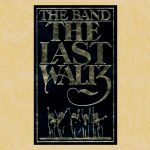 Despite their low profile and beautifully crafted studio albums The Band essentially were performers. Years of backing Hawkins and Dylan saw to that so this list of essentials would not be complete without a live recording. ‘The Last Waltz’ album of the Martin Scorsese film of the same wins on its sheer scope. Three years previously The Band had propelled Dylan with power and direction in performances that completely obscured the fractures among the group. And that show must go on attitude lasted right through their final appearance when discord had become irreparable. A triple album ‘The Last Waltz’ is five sides of The Band twisting and turning through their greatest hits with a glittering array of friends. Ronnie Hawkins bellows a “big time Robbie, big time” then screeches through ‘Who Do You Love’. There follows Neil Young, Joni Mitchell, Dr John, Paul Butterfield, a sensational ‘Mannish Boy’ with Muddy Waters, Van Morrison and of course, ‘Baby Let Me Follow You Down’, ’Forever Young’ and ‘I Shall Be Released’ with Dylan. The Band commit to each artist, to the point where only on the film is Robertson’s taking Eric Clapton’s lead (who had broken a string) perceptible on ‘Further On Up The Road’. The sixth side highlights are separate recordings with Emmylou Harris, ‘Evangeline’ and a magnificent ‘The Weight’ from The Staples. That senses of ease with such varied artists comes across even more emphatically in the studio.
Despite their low profile and beautifully crafted studio albums The Band essentially were performers. Years of backing Hawkins and Dylan saw to that so this list of essentials would not be complete without a live recording. ‘The Last Waltz’ album of the Martin Scorsese film of the same wins on its sheer scope. Three years previously The Band had propelled Dylan with power and direction in performances that completely obscured the fractures among the group. And that show must go on attitude lasted right through their final appearance when discord had become irreparable. A triple album ‘The Last Waltz’ is five sides of The Band twisting and turning through their greatest hits with a glittering array of friends. Ronnie Hawkins bellows a “big time Robbie, big time” then screeches through ‘Who Do You Love’. There follows Neil Young, Joni Mitchell, Dr John, Paul Butterfield, a sensational ‘Mannish Boy’ with Muddy Waters, Van Morrison and of course, ‘Baby Let Me Follow You Down’, ’Forever Young’ and ‘I Shall Be Released’ with Dylan. The Band commit to each artist, to the point where only on the film is Robertson’s taking Eric Clapton’s lead (who had broken a string) perceptible on ‘Further On Up The Road’. The sixth side highlights are separate recordings with Emmylou Harris, ‘Evangeline’ and a magnificent ‘The Weight’ from The Staples. That senses of ease with such varied artists comes across even more emphatically in the studio.
Number 6: The Band ‘Stage Fright’ (1970)
 By the time of their third album cracks had begun to emerge in Big Pink’s strong foundations. The fraternal huddle was collapsing as everyone reacted differently to their new-found fame. Helm, Manuel and Danko struggled with drugs while Robertson’s grip on the group tightened. There is a confessional feel to the whole album as Robertson wrote less about people, places and history and more about himself. Even the sound has an anxious timbre as Todd Rundgren replaced John Simon as sound engineer. For an album meant to lighten up after its two predecessors ‘Stage Fright’ aptly describes how the camaraderie of one voice for all was fast disappearing. ‘The Shape I’m In’ is a perfect example the solid rhythm bond forged between Helm’s drumming and Danko’s bass. But none of that, or deft keys or even a happier sounding Manuel disguise the lyrical introspection and anxiety. Similarly, the buoyant tempo of ‘Time To Kill’ diverts the attention from the lyrics telling of what happens to imaginative people with time on their hands. Danko’s vocals on ‘Stage Fright’, a regular on the setlist, reverberate with trepidation despite the elaborate interplay between all musically.
By the time of their third album cracks had begun to emerge in Big Pink’s strong foundations. The fraternal huddle was collapsing as everyone reacted differently to their new-found fame. Helm, Manuel and Danko struggled with drugs while Robertson’s grip on the group tightened. There is a confessional feel to the whole album as Robertson wrote less about people, places and history and more about himself. Even the sound has an anxious timbre as Todd Rundgren replaced John Simon as sound engineer. For an album meant to lighten up after its two predecessors ‘Stage Fright’ aptly describes how the camaraderie of one voice for all was fast disappearing. ‘The Shape I’m In’ is a perfect example the solid rhythm bond forged between Helm’s drumming and Danko’s bass. But none of that, or deft keys or even a happier sounding Manuel disguise the lyrical introspection and anxiety. Similarly, the buoyant tempo of ‘Time To Kill’ diverts the attention from the lyrics telling of what happens to imaginative people with time on their hands. Danko’s vocals on ‘Stage Fright’, a regular on the setlist, reverberate with trepidation despite the elaborate interplay between all musically.
Number 5: Levon Helm ‘Dirt Farmer’ (2007)
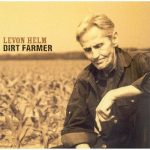 If The Band were the first truly americana group, it was Levon Helm who contributed so many of those traditional influences, most notably in his final two albums. After surgery for throat cancer by 2007 Helm’s voice had miraculously recovered sufficient resilience. Though no longer a rich tenor he had sufficient range to rasp with love, perfect for this album of covers that turns the clock back far beyond The Band to the music his parents had taught him. Helm had many collaborators, prominent were Dylan’s sideman Larry Campbell and daughter Amy. ‘Little Birds’ is a timeless lament with only Campbell’s strings and Amy’s voice as accompaniment. The Stanley Brothers were revered the Helm household, ‘Poor Old Dirt Farmer’ is his tribute. Again, stripped back to the bone, Helm’s ‘new’ voice seems even more suited to the task of mourning the farmer’s losses. He applies that same lasting tradition to Steve Earle’s ‘The Mountain’.
If The Band were the first truly americana group, it was Levon Helm who contributed so many of those traditional influences, most notably in his final two albums. After surgery for throat cancer by 2007 Helm’s voice had miraculously recovered sufficient resilience. Though no longer a rich tenor he had sufficient range to rasp with love, perfect for this album of covers that turns the clock back far beyond The Band to the music his parents had taught him. Helm had many collaborators, prominent were Dylan’s sideman Larry Campbell and daughter Amy. ‘Little Birds’ is a timeless lament with only Campbell’s strings and Amy’s voice as accompaniment. The Stanley Brothers were revered the Helm household, ‘Poor Old Dirt Farmer’ is his tribute. Again, stripped back to the bone, Helm’s ‘new’ voice seems even more suited to the task of mourning the farmer’s losses. He applies that same lasting tradition to Steve Earle’s ‘The Mountain’.
Number 4: Levon Helm ‘Electric Dirt’ (2009)
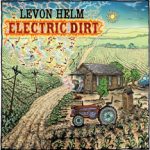 Helm’s music revolved around his ‘Midnight Ramble’ jams with a huge variety of musicians in his studio/barn. There are three volumes of ‘Rambles’ but his last album, ‘Electric Dirt’ also completely recreates their essence. Throughout these covers he switches between Muddy Waters ‘Stuff You Gotta Watch’ to the bluegrass of Carter Stanley’s ‘White Dove’, Greenwich Village folk stalwart Happy Traum’s ‘Golden Bird’ and Garcia/Hunter’s ‘Tennessee Jed’. Daughter Amy features once more, her own superb music carries on the family traditions and again Larry Campbell made the greatest contribution. ‘Electric Dirt’ won the first ever Grammy Award for ‘Best Americana Album’. For the first time in thirty years Helm wrote (with Campbell). ’Growin’ Trade’, about an ageing farmer who grows marijuana because “this land is my legacy, I got nowhere to turn”. Two years on from ‘Dirt Farmer’, ‘Golden Bird’ is proof his voice had regained even more of its previous elasticity. The bird soars along the thermals from layers of harmonium, autoharp, dulcimer and harmonies.
Helm’s music revolved around his ‘Midnight Ramble’ jams with a huge variety of musicians in his studio/barn. There are three volumes of ‘Rambles’ but his last album, ‘Electric Dirt’ also completely recreates their essence. Throughout these covers he switches between Muddy Waters ‘Stuff You Gotta Watch’ to the bluegrass of Carter Stanley’s ‘White Dove’, Greenwich Village folk stalwart Happy Traum’s ‘Golden Bird’ and Garcia/Hunter’s ‘Tennessee Jed’. Daughter Amy features once more, her own superb music carries on the family traditions and again Larry Campbell made the greatest contribution. ‘Electric Dirt’ won the first ever Grammy Award for ‘Best Americana Album’. For the first time in thirty years Helm wrote (with Campbell). ’Growin’ Trade’, about an ageing farmer who grows marijuana because “this land is my legacy, I got nowhere to turn”. Two years on from ‘Dirt Farmer’, ‘Golden Bird’ is proof his voice had regained even more of its previous elasticity. The bird soars along the thermals from layers of harmonium, autoharp, dulcimer and harmonies.
Number 3: Bob Dylan & The Band ‘The Basement Tapes’ (1975)
 Perhaps ironic after a world tour enraging fans by turning electric Bob Dylan and The Band got together again to explore their love and knowledge of traditional music. During 1967’s summer of love while the world was tuning in, turning on and dropping out, in a basement of ‘Big Pink’ in Woodstock, Dylan and The Band were digging deep into the roots of American music, both recording old songs and blending that history into something new. The sound is simple, the production is minimal but the result is total absorption into something completely timeless from the singalong of ‘Apple Suckling Tree’ to ‘Tears of Rage’, Dylan’s anguish at the way Vietnam was ripping America apart. ‘Clothes Line Saga’ pegs Dylan’s vocals to all the elements of The Band into a languid flow to match their rural surroundings. That vibe characterised these recordings. They even make ’Long Distance Operator’ feel like a jaunt through the fields, just another dimension to this encyclopaedia of American music.
Perhaps ironic after a world tour enraging fans by turning electric Bob Dylan and The Band got together again to explore their love and knowledge of traditional music. During 1967’s summer of love while the world was tuning in, turning on and dropping out, in a basement of ‘Big Pink’ in Woodstock, Dylan and The Band were digging deep into the roots of American music, both recording old songs and blending that history into something new. The sound is simple, the production is minimal but the result is total absorption into something completely timeless from the singalong of ‘Apple Suckling Tree’ to ‘Tears of Rage’, Dylan’s anguish at the way Vietnam was ripping America apart. ‘Clothes Line Saga’ pegs Dylan’s vocals to all the elements of The Band into a languid flow to match their rural surroundings. That vibe characterised these recordings. They even make ’Long Distance Operator’ feel like a jaunt through the fields, just another dimension to this encyclopaedia of American music.
Number 2: The Band ‘Music From Big Pink’ (1968)
 After ‘The Basement Tapes’ The Band stayed on in ‘Big Pink’. The result is their debut, a fusion of country, rock, folk, classical, R&B, blues and soul feature that ran so completely against the contemporary music grain. A true communal effort, there are no guitar solos as these multi-instrumentalists swirled ethereally around sensitive vocals from Manuel and Danko. One cover, two by Dylan and the rest originals, the lack of overdubbing adds to the live, spontaneous feel. Manuel’s vocals cry ‘Tears Of Rage’ and ‘I Shall Be Released’. Hudson’s majestic Lowrey organ intro to ‘Chest Fever’ turns The Band into Bach. ‘The Weight’ combines Robertson’s writing with Danko and Helm’s vocals. These songs have appeared previously on this list but their originals are essential. For bonus retakes go to the 50th anniversary re-release.
After ‘The Basement Tapes’ The Band stayed on in ‘Big Pink’. The result is their debut, a fusion of country, rock, folk, classical, R&B, blues and soul feature that ran so completely against the contemporary music grain. A true communal effort, there are no guitar solos as these multi-instrumentalists swirled ethereally around sensitive vocals from Manuel and Danko. One cover, two by Dylan and the rest originals, the lack of overdubbing adds to the live, spontaneous feel. Manuel’s vocals cry ‘Tears Of Rage’ and ‘I Shall Be Released’. Hudson’s majestic Lowrey organ intro to ‘Chest Fever’ turns The Band into Bach. ‘The Weight’ combines Robertson’s writing with Danko and Helm’s vocals. These songs have appeared previously on this list but their originals are essential. For bonus retakes go to the 50th anniversary re-release.
Number 1: The Band ‘The Band’ (1969)
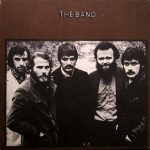 For their second album The Band took their clubhouse ethos from the east coast to LA. The “Brown Album” is a concept album that digs much deeper into the people, places and traditions of American music for which it attracted greater critical acclaim than its predecessor. ’The Night They Drove Old Dixie Down’ combines Helm’s pained vocals with his very personal drumming style. ‘Up On Cripple Creek’ is lighter lyrically and a perfect example of the rich musical mix from simple mouth harp to layered organ. No-one dominates ‘Rag Mama Rag’ which jigs from Memphis to New Orleans as Helm switches to mandolin, Manuel playsdrums and harmonica, bassist Rick Danko plays fiddle and producer John Simon blows the tuba, while organist Garth Hudson is on upright acoustic piano. Perhaps a precursor of bad times there is a foreboding sadness to Manuel’s vocals on ‘Whispering Pines’. It should be no surprise that ‘The Band’ is AUK’s Number 1 Americana album ever.
For their second album The Band took their clubhouse ethos from the east coast to LA. The “Brown Album” is a concept album that digs much deeper into the people, places and traditions of American music for which it attracted greater critical acclaim than its predecessor. ’The Night They Drove Old Dixie Down’ combines Helm’s pained vocals with his very personal drumming style. ‘Up On Cripple Creek’ is lighter lyrically and a perfect example of the rich musical mix from simple mouth harp to layered organ. No-one dominates ‘Rag Mama Rag’ which jigs from Memphis to New Orleans as Helm switches to mandolin, Manuel playsdrums and harmonica, bassist Rick Danko plays fiddle and producer John Simon blows the tuba, while organist Garth Hudson is on upright acoustic piano. Perhaps a precursor of bad times there is a foreboding sadness to Manuel’s vocals on ‘Whispering Pines’. It should be no surprise that ‘The Band’ is AUK’s Number 1 Americana album ever.



Nice to see Levon so well represented. After being such a key part of the Band’s success he struggled to maintain a successful solo career before his magnificent late career flourish with the albums above. I thought Dirt Farmer was so good he couldn’t top it but he did with Electric Dirt.
Why no Rick Danko 1977 solo album? I love that record!
I agree! Rick Danko’s 1977 solo album is my third favorite “Band” record of all-time.
Fair point, you would appear not to be alone so the least I can do is offer a reason! Perhaps the list should have said “Essentials (imho)” as I would not presume this is anything more than a list of albums that have made the deepest impression on me. Rick Danko’s 1977 solo album (playing as I write) didn’t make it because though there are some very fine songs (New Mexicoe, Sip The Wine) overall it made less of an impact than certainly Levon’s final two. Perhaps I’m too skewed towards Levon’s roots side but there we are, back to imho. Which of my list would you replace with ‘Rick Danko’?
Cahoots is much better than Moondog Matinee in my humble opinion, and much as I love Helm and his solo work, Stage Fright cannot be other than third here, once more, according to me, yet the loving and insightful commentary here makes this an interesting list.
As you say ‘imho’ to which yours carries the same weight as mine! Thank you for your kind comment, my love for The Band far exceeds that for lists but I did want to have a shot at the challenge.
Rick Danko sang on “Robbie Robertson,” but Richard Manuel did not appear on the record, except through the memory of “Fallen Angel.”
I think “Northern Lights-Southern Cross” should be on the list but not “Moondog.”
Totally agree on NLSC, a very underrated album. (Also, very funky.)
Richard did sing on the gorgeous “Between Trains” from King of Comedy (1983), which also has Garth and has that deep, old “Band” feel and sound.
You are quite right. Such an elementary error is shabby so my apologies. I include Moondog because in a way it goes right back to The Band’s roots as The Hawks which I feel should be noted. But again, fair comment and perhaps they could have done better than an album of covers. Once again though, I plead ‘imho’.
I think Rock of Ages was one of the best live albums ever, much better than Last Waltz. After the disappointment I experienced with Cahoots and Moondog, Rock of Ages re-ignited my passion for The Band. I’d put that at #3 on the list.
As if knocking out candidates for the final ten wasn’t hard enough I limited myself to one live album. ‘Rock of Ages’ is very fine and there are several good reasons why it should be the one. However, putting aside the fact I saw ‘The Last Waltz’ three times during the week it was released and subsequently wore out the video, I included it to show just how influential The Band had become back then. Perhaps I allowed nostalgia to take over?
I bought Rock of Ages as soon as it was released.
It was a disappointment then and remains so.
The reason? I was at the second of their 1971 Royal Albert Hall shows. The live material (taken from one or other or both of those shows) issued with the recent 50th anniversary Stage Fright underlines why I found RoA so disappointing. Frankly, I think it was a mistake to make their first live album one which included the extra horns – nice though Alain Toussaint’s arrangements are, for me they add little and subtract a lot.
Just compare Don’t Do It on the two records: the Albert Hall rocks so much harder.
I’d also agree with others that both Cahoots and Northern Lights are better than Moondog Matinee, all three of which I bought as soon as they were released.
There is a bootleg of the actual Last Waltz concert which IMHO is better than the official release, but the Royal Albert Hall show(s) tower above all other live Band material (I have around 10 shows) I know.
It was worth waiting half a century to hear it again.
Well done list, Lyndon. I have steered clear of a few on your list for fear of disappointment, but now can reconsider thanks to your perspective. Interesting to see Robertson’s solo album in the list. It’s a stunning recording and never ceases to reveal new layers (thanks to its reported $1 Million dollar budget!). The deservedly #1 Brown Album manages to be of a time and timeless – something very few albums have accomplished. Of late, I have stumbled on another “lost Band album” – the first release by Jesse Winchester. It was produced by Robbie and includes contributions from Levon as well. Another surprising one from my vault is “Max” by The Rumor )1977) – Nearly half the songs sound heavily influenced by late-period Band recordings.
Thanks Rich. No surprise then that ‘The Brown Album’ topped the AUK writers list of top ten Americana albums ever. I must revisit Jesse Winchester.